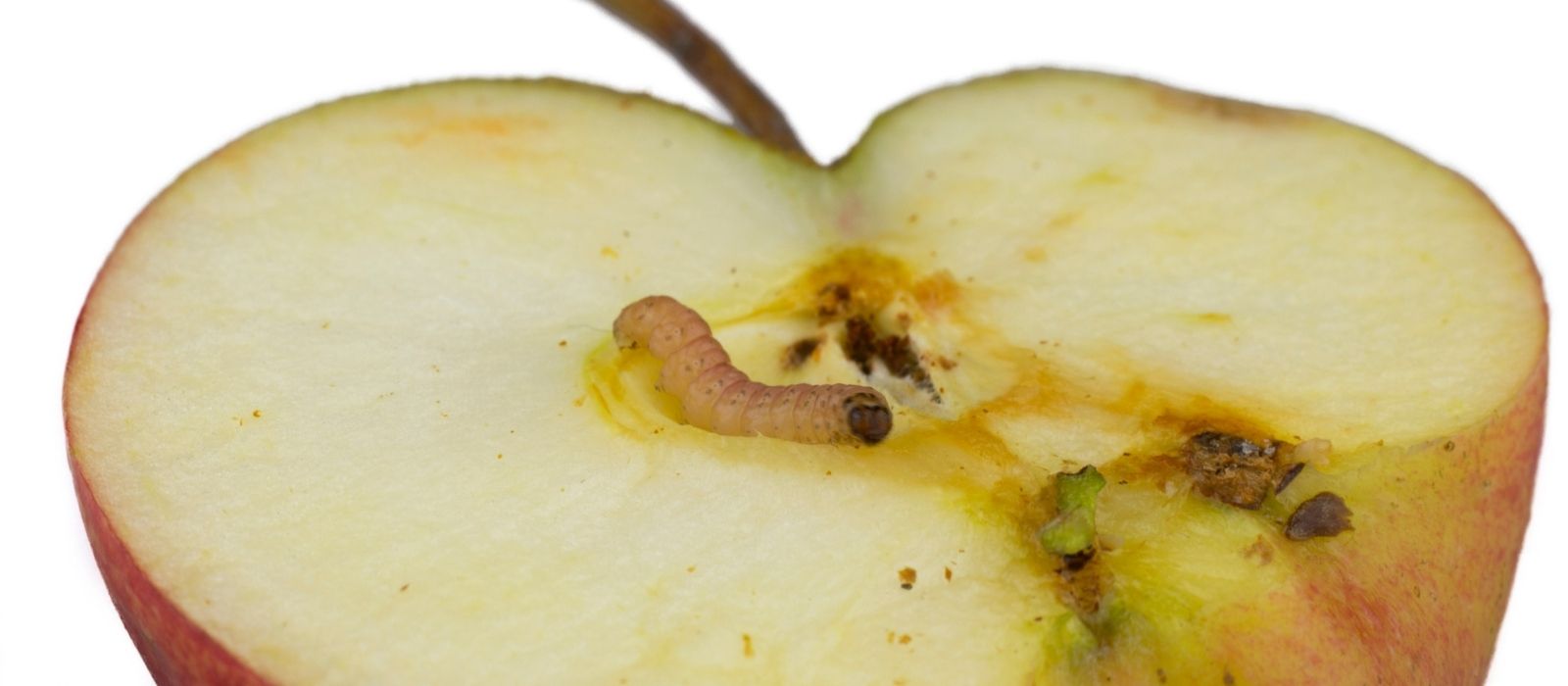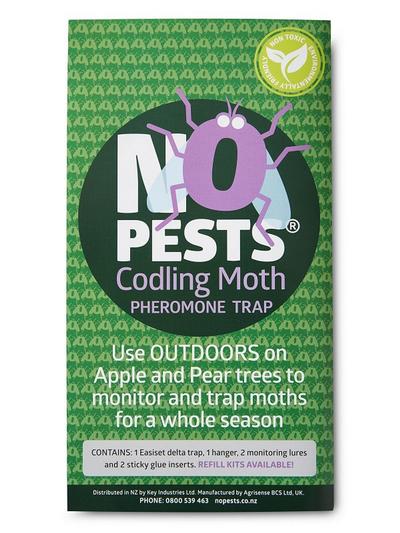
What is Codling Moth?
The codling moth is a small, greyish insect with faint stripes and copper markings on its wings. While the moth itself is unassuming, its larvae are the real problem. Female moths lay eggs on fruit and leaves from October through March. These eggs hatch into tiny black-headed, yellow larvae that immediately burrow into developing fruit. Once inside, they feed for about three weeks, leaving behind the telltale “wormy” apple. After feeding, larvae leave the fruit to overwinter in the soil or bark crevices, emerging again the following season to start the cycle anew. This cycle explains why codling moth can be such a persistent problem in home gardens.
Using Pheromone Traps
The best way to get ahead of codling moth is by monitoring their activity with pheromone traps. These traps use a synthetic version of the scent females release to attract males. Once the males are drawn in, they become stuck on the trap’s sticky surface. While this does reduce breeding, traps are most useful as a signal for when moths are flying and when spraying should begin.
Place traps in your trees in late August to mid-September, before moth activity begins. Each trap will effectively monitor three to five trees. Check them weekly and keep a close eye on moth numbers. If you catch more than five moths in a week, you can assume there is a heavy infestation. Replacement sticky pads are available instore and online so you can keep traps fresh throughout the season.
Spraying for Control
Sprays are timed according to moth activity. It’s important to wait about 10 days after moths first appear in your traps before spraying, as this allows eggs to hatch into larvae. Once larvae are present, sprays will be effective.
- Use an insecticide such as Yates Success Ultra or selected Neem Oils for reliable results.
- Alternate sprays every 7–10 days while moth activity continues. Note: Success Ultra should only be used a maximum of 3 times per season.
- Always remove traps before spraying, as sprays can interfere with the pheromone scent. Reattach them about six hours later.
- Spray both the top and underside of leaves for full coverage.
- Do not spray if rain is expected within six hours, as sprays need time to dry.
Natural and Organic Options
If you prefer to reduce chemical use, there are natural methods that can also help:
- Neem Tree Oil: Spray every seven days until moth numbers in traps decrease. Neem works by disrupting insect feeding and reproduction.
- Neem Tree Granules: Spread around the base of fruit trees every 4–6 weeks. The smell deters moths from approaching trees but avoid using where chickens may forage.
- Chickens: Free-ranging chickens are excellent at eating larvae and pupae hiding in soil or bark crevices.
- Good Hygiene: Remove and destroy any fallen or infested fruit to break the moth’s life cycle and prevent future outbreaks.
Tips & Tricks for Codling Moth
- Place pheromone traps in August to get ahead of moth activity.
- One trap monitors 3–5 trees.
- Traps are an indicator only – don’t rely on them as the sole control.
- Check traps weekly. If five or more moths are caught, prepare to spray.
- Wait 10 days after the first moths appear before spraying.
- Respray every 7–10 days as long as moths are active.
- Remove traps before spraying; reattach them after six hours.
- Spray both sides of leaves for thorough coverage.
- Avoid spraying within six hours of rain.
- Collect and destroy affected fruit to prevent spread.
With consistent monitoring and a combination of control methods, codling moth can be managed successfully. Whether you choose sprays, organic treatments, or a mixture of both, early action and persistence are the keys to keeping your trees healthy and your fruit deliciously worm-free.











